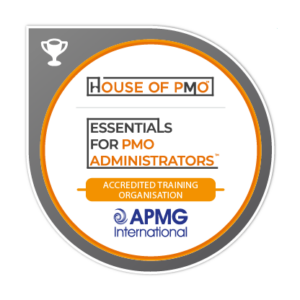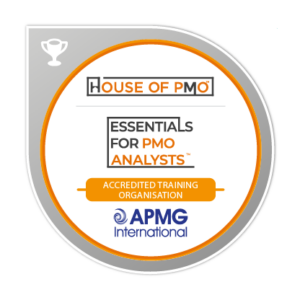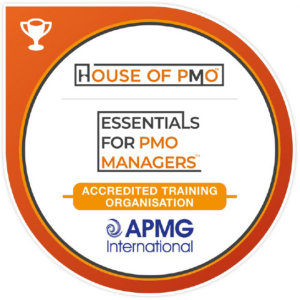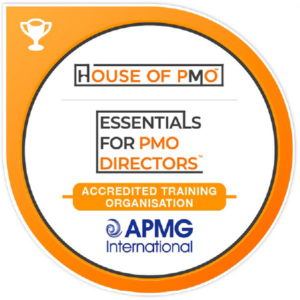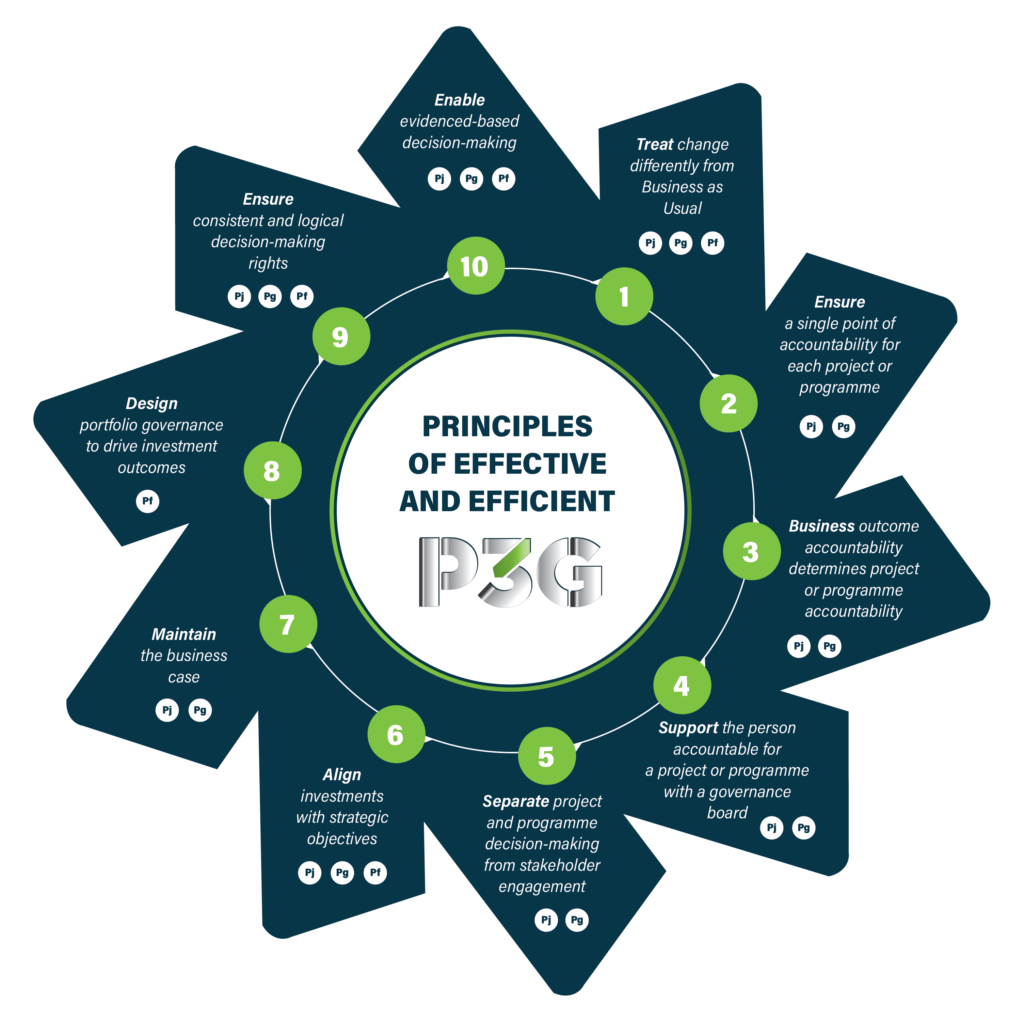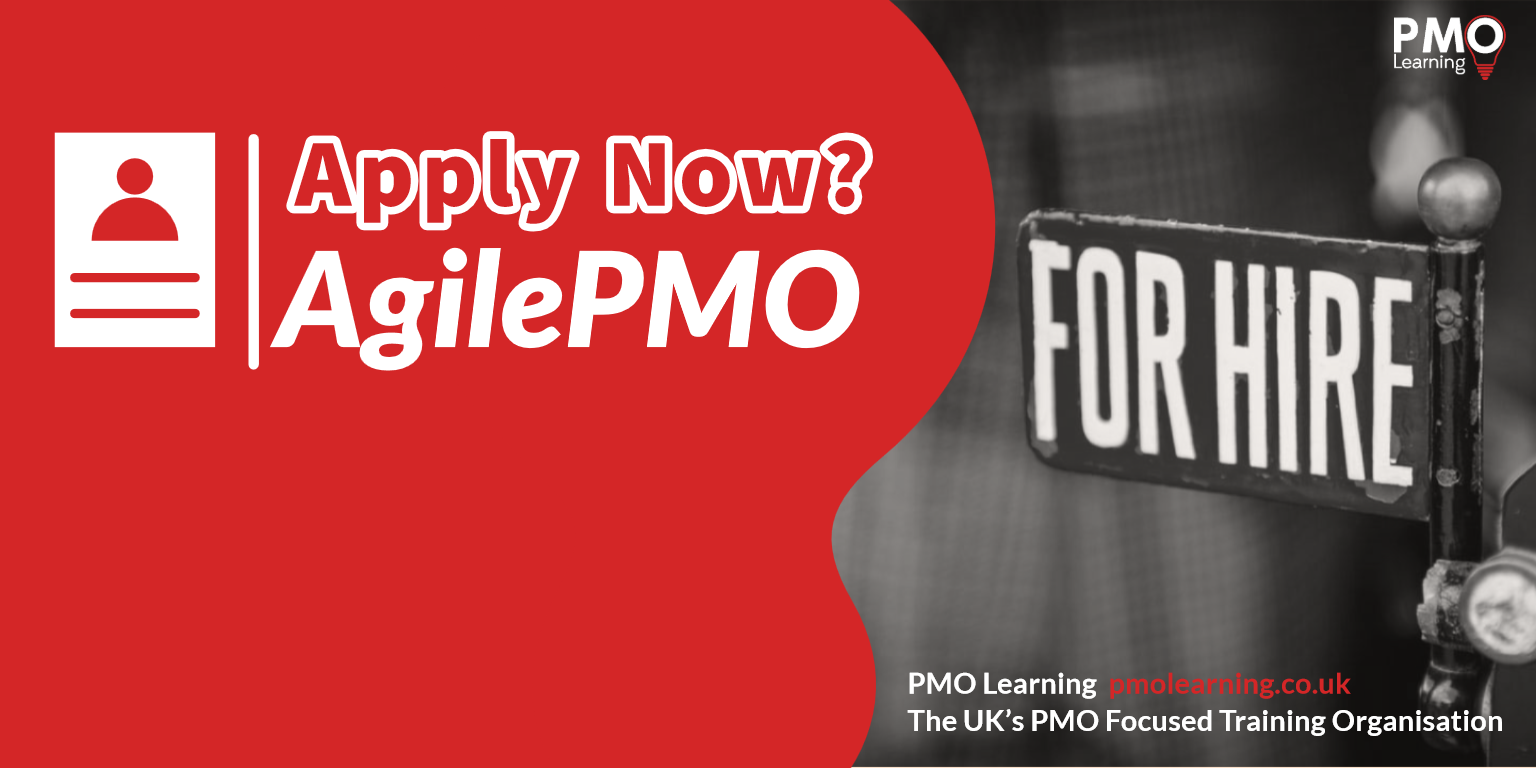
 It’s been a while since we first started looking into Agile and the impact of this mindset – delivery culture – framework – call it what you will and the impact on the PMO.
It’s been a while since we first started looking into Agile and the impact of this mindset – delivery culture – framework – call it what you will and the impact on the PMO.
It was back in 2014 when PMO Flashmob had it’s first session on Agile PMO (PMOs supporting Agile projects) and a full practical session in 2015.
We’re now five years down the road and over that time PMOs have been working out how to support Agile projects within their businesses.
What Approach Have PMO Practitioners Taken
In the course we run – Lean-Agile PMO – the focus is on what the PMO is doing in areas such as governance, reporting, benefits management, planning, business cases and supporting the broader adoption of Agile.
 For many PMO practitioners, understanding Agile approaches first – either by attending a formal course such as Agile Project Management or attending an internal course – has been the first step.
For many PMO practitioners, understanding Agile approaches first – either by attending a formal course such as Agile Project Management or attending an internal course – has been the first step.
Then there is that focus on how Agile projects – and indeed those projects that combine both Agile and Waterfall approaches – will run in reality in the business.
PMO practitioners have found that, yes, there are changes in the way you report Agile project status and yes, the governance and decision-making has changed – but they still need to be incorporated into an existing project delivery framework. They have questions about how projects are prioritised – does it change if some of the projects are being run in an Agile way? Then there are business cases – do those change and if so how? And what about benefits management – surely that doesn’t exist with Agile projects?
Slowly but surely over the last four to five years, more and more questions are raised as organisations start their journey to utilising an Agile approach – and look to improve their maturity and embed the culture further.
Where Are PMO Practitioners Now
 We’re a few years down the road. Back in 2014-2015, there were no PMO focused roles that touched on Agile. There were no job advertisements that listed it as knowledge that was needed and experience in certain activities and tasks.
We’re a few years down the road. Back in 2014-2015, there were no PMO focused roles that touched on Agile. There were no job advertisements that listed it as knowledge that was needed and experience in certain activities and tasks.
How has that changed today?
We’re starting to see more and more Agile related skills and experience required in the PMO and here we take a look at what those are.
Here’s the top Agile related experience needed in the PMO today, as requested by organisations in current job advertisements:
1. Support and guidance in implementing Agile frameworks
The PMO is expected to take an active role in the implementation of Agile frameworks in the organisation.
Our Agile Frameworks and the PMO one day course covers this one perfectly. “This class is designed to give an overview of the main Agile at Scale frameworks. To identify the unique elements of each so that PMOs may decide how the Agile Frameworks can be used and governed.”
There are different frameworks available (SAFe, LeSS, Disciplined Agile etc) so it makes sense that the PMO has an understanding of the frameworks and what the common components are.
In some cases, the PMO takes on the frameworks themselves, “Model the use of Scrum by using Scrum itself to run the PMO. Plan time-boxed sprints, conduct daily scrums with the PMO team, reviews and retrospectives.”
2. Develop Best Practices
There’s a lot of requirements out there today in the marketplace for PMO practitioners who have experience of best practice PPM and Agile approaches. The simple reason is there has been two components missing. The first is a best practice approach to Agile projects within the organisation – an organisation wants to establish THEIR best practice approach in order to ensure consistency. The second is the best practice approach to blending the two – we have projects which bring in an Agile element, perhaps a project with a product or development component. An organisation also wants a consistent approach to how it does just this.
The bottom-line with best practices is anyone working on a project, regardless of its mode of delivery, wants to make sure they’re not constantly reinventing the wheel when it comes to the processes they follow and the systems they use.
PMOs are developing new practices to enable the organisation to achieve this.
3. Focusing on Value
The PMO – with its reputation for delivering information on key metrics and measures are also expected to get into the metrics of Agile by establishing and collecting metrics on how well the organisation is adopting agile and how well teams are doing at delivering value.
4. Removing Blockers
The PMO is there to eliminate waste (the Lean side of the Lean-Agile PMO)
For the PMO that means being able to work with the delivery teams to “eliminate all identified wasteful activities and artefacts that are not adding value, e.g. review current reporting requirements and improve/reduce to a healthy and agreeable set”
The PMO has a great role to play here in reviewing how things get done, proposing improvements, making those happen and keeping a constant eye on how things are shaping up as the teams become more productive and mature.
5. Making Sure The Teams Have The Tools
There’s a whole raft of working practices, artefacts, tools and techniques that delivery teams are adopting to really work in an Agile way.
It’s the PMO’s role to provide and maintain tools by assisting teams in adopting appropriate agile tools (like Trello, Jira, MS Teams) and providing training. It’s also the PMO’s role to make sure they’re fit-for-purpose, accessibility, secure and adaptable.
What’s Not Changed
The job market for project management has always been a tricky one.
Take for example the whole PRINCE2 thing – a job advertisement asks for PRINCE2 as a requirement but the role and/or the organisation don’t really use it.
We’re starting to see something similar with Agile experience and PMO roles.
There are countless job advertisements out there that highlight something like this:
“Understanding in a variety of delivery methodologies (e.g. waterfall, agile), a project management qualification is preferred.”
The problem is, with the rest of the job advertisement, it’s not exactly clear why this experience is required. What level of understanding is it needed? How does the organisation intend to use this knowledge in its PMO practitioners? What is the PMO practitioner expected to do in the role with this knowledge and experience?
The issue is, the rest of the advertisement looks awfully similar to all the other advertisements pre-Agile, pre-2015. There is no other mention of what the PMO practitioner is expected to do that is Agile related.
I hope we’re not heading to a place where Agile is on the job advertisement just because it’s the in-thing to do – and has no real need to be there. As ever, it’ll come down to the job hunter to ask those questions when it comes to the interview!
Heading Into The Future
As we stand on the cusp of 2020, it’s clear from the job advertisements that are out there; the delegates that come on the training courses and the chats at PMO Flashmob – that there is still a lot of mist and murk around Agile projects and Agile on a greater scale and an embedding of culture.
There’s still a lot for people to learn and a clearer path for the journey required. As ever, it comes down to a combination of education and the will of the people to do the right thing.
It still feels like we’re not too many steps along on that path, it’ll be interesting to see how PMO jobs change in twelve months when we revisit it.






